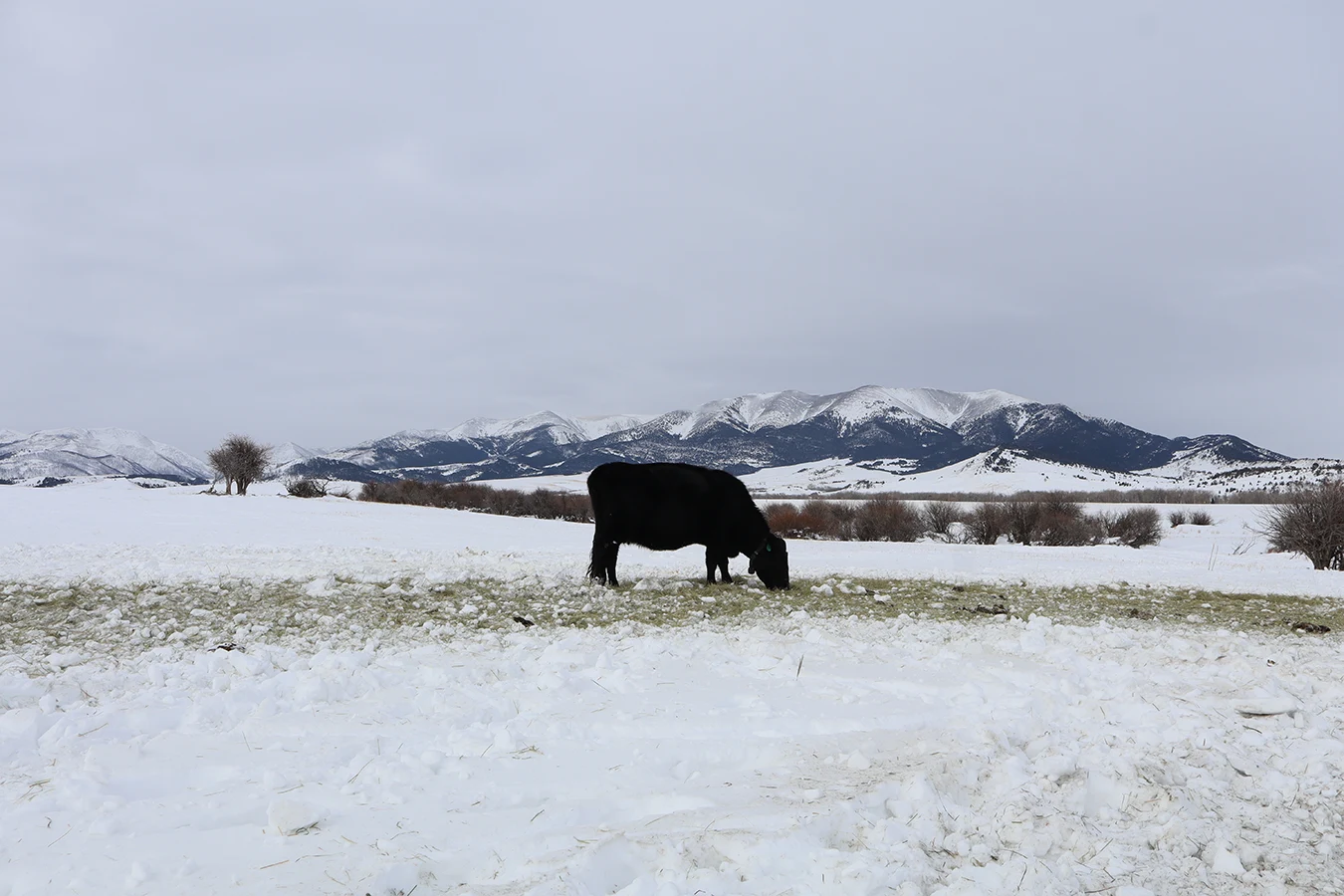4 Proven Drivers of Mating Success (Backed by Data You Won’t Find Elsewhere)
What we learned from Spring Mating 2024
Mating is more than just a hectic few months on a dairy farm - it’s a key driver of herd fertility, productivity, and profitability. Looking at 2024 Spring Mating data from thousands of cows across hundreds of herds using Halter’s virtual fencing and mating tool, we’ve found patterns that point toward what drives the best results.
From insemination timing, to how long cows stay on OAD milking after calving, and how cycling rates can predict success, we’ve got learnings (and had industry assumptions proven with data) that are relevant to all farms. There’s some juicy stuff in here, so keep reading!
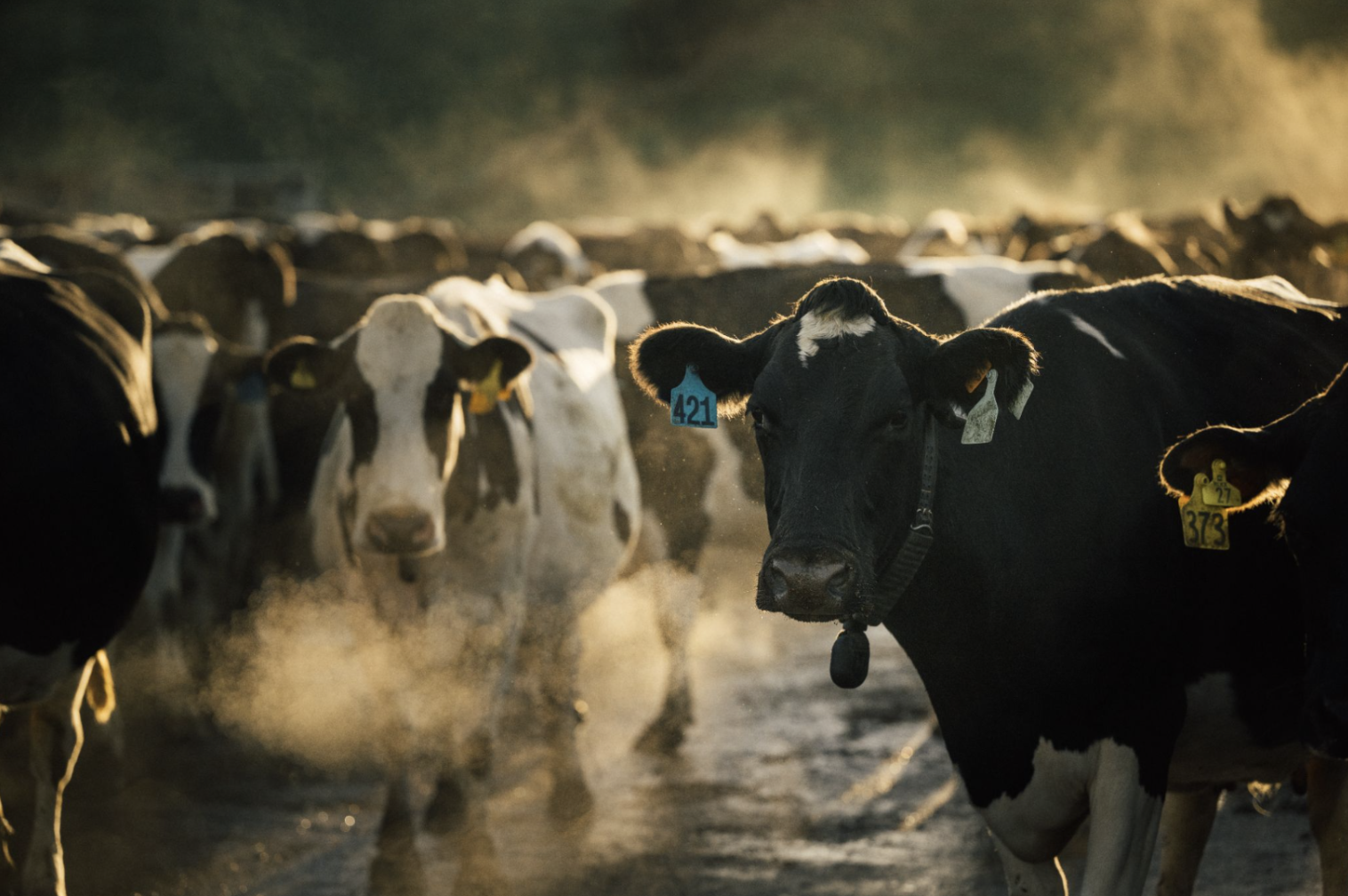
Timing matters
One of the biggest factors in insemination success is timing. We measure this relative to a cow’s 'activity peak', which is the moment when her movement levels reach their highest point.
- The most successful 6-hour insemination window sits between 2 and 8 hours after peak activity
- A broader 12-hour insemination window stretches from 1 hour before to 11 hours after peak
- The best 24-hour insemination window runs from 11 hours before to 13 hours after peak

Our heat detection timing is designed for once-a-day insemination routines and gets cows inseminated within this 24-hour window ~80% of the time. We’ve found that around 15% of the time, inseminations happen slightly too late, and in about 5% of cases, they’re too early. It’s never easy getting that timing perfectly right!
Cycling rates predict success
Cycling rate has long been recognised across the industry as one of the clearest indicators of how a farm’s mating season will go, and it’s great to see this reinforced so strongly by the scale of our dataset. Looking at data from nearly 300 farms in Spring 2024, the link was clear:
- Farms hitting the industry target of 85% cycling at PSM almost always achieved a 6-week in-calf rate (6WICR) above 70%
- Submission rates showed an even tighter correlation - farms with strong early submissions consistently landed stronger in-calf results
- At PSM, the median cycling rate was 75.5%. Top-performing farms cleared 90%, while a quarter of the farms sat below 63%
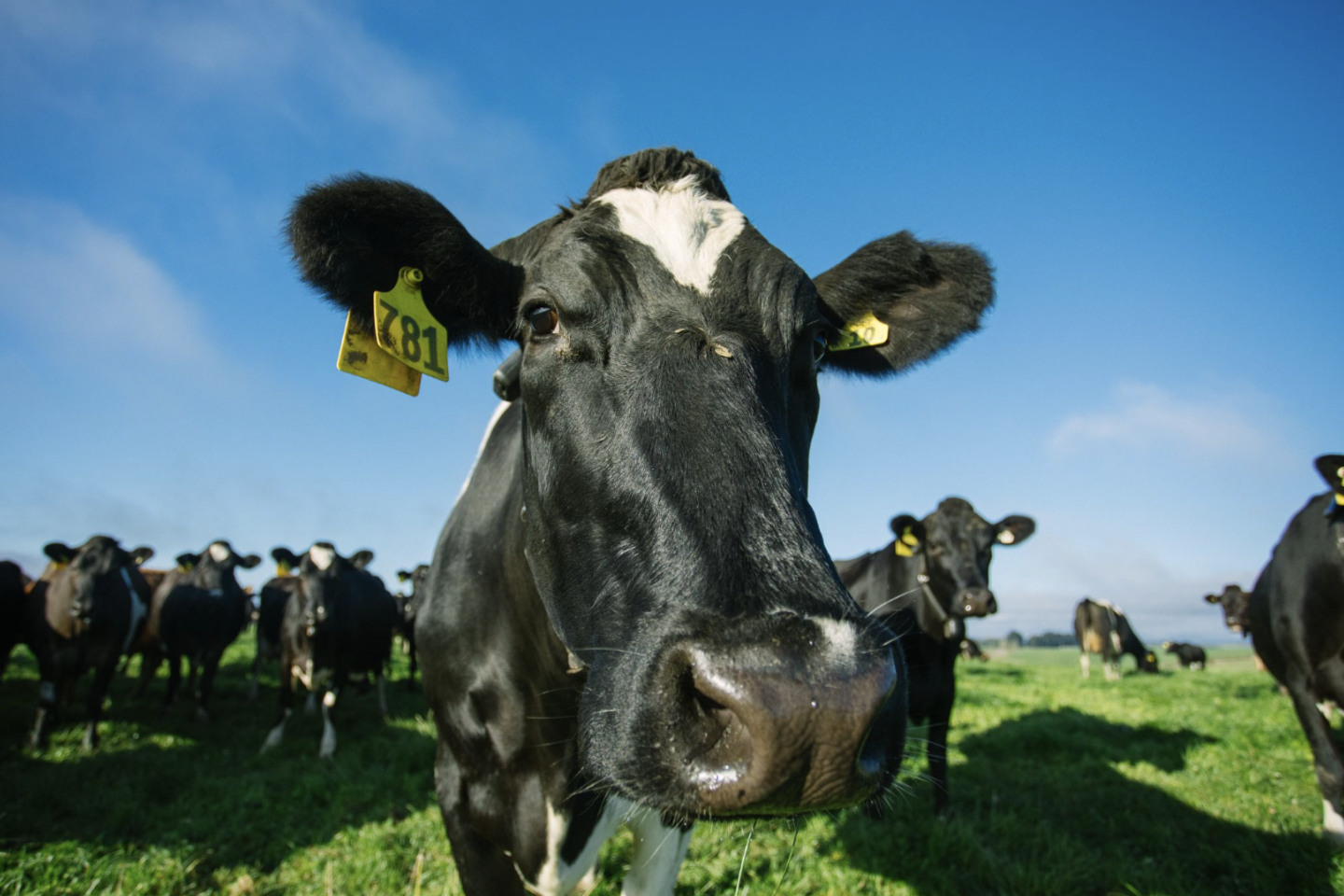
Recovery pays off
How long cows stay on once-a-day (OAD) after calving also showed a significant impact. Across the fleet, cows given more time on OAD (even just a few days) before moving to twice-a-day had higher conception rates later in the season.
This doesn’t mean OAD alone drives fertility - those farms are often managing other factors well too, but the correlation is strong enough to highlight.
Interestingly, in a limited sample of cows with milk meters, we saw no negative effect on long-term production from longer OAD - in fact, those cows actually produced slightly more across the entire season.
Focus on the first 4 days after calving
When we looked at behaviour around calving, one period stood out: the 4 days post-calving. Cows that grazed, ruminated, and stayed more active in these early days went on to show stronger fertility.
Focusing on rumination for a moment: while there’s no single “optimal” number, herds averaged best fertility when cows were ruminating around 400–500 mins/day in that recovery window.

Time since calving influences conception probability
We also saw how conception probability (CP) climbs steadily with more days since calving, all the way to 12 weeks. This highlights the advantage of calving early relative to PSM, as cows with more days between calving and first service showed higher conception rates. Time since calving was also a stronger predictor than the number of heats a cow had.
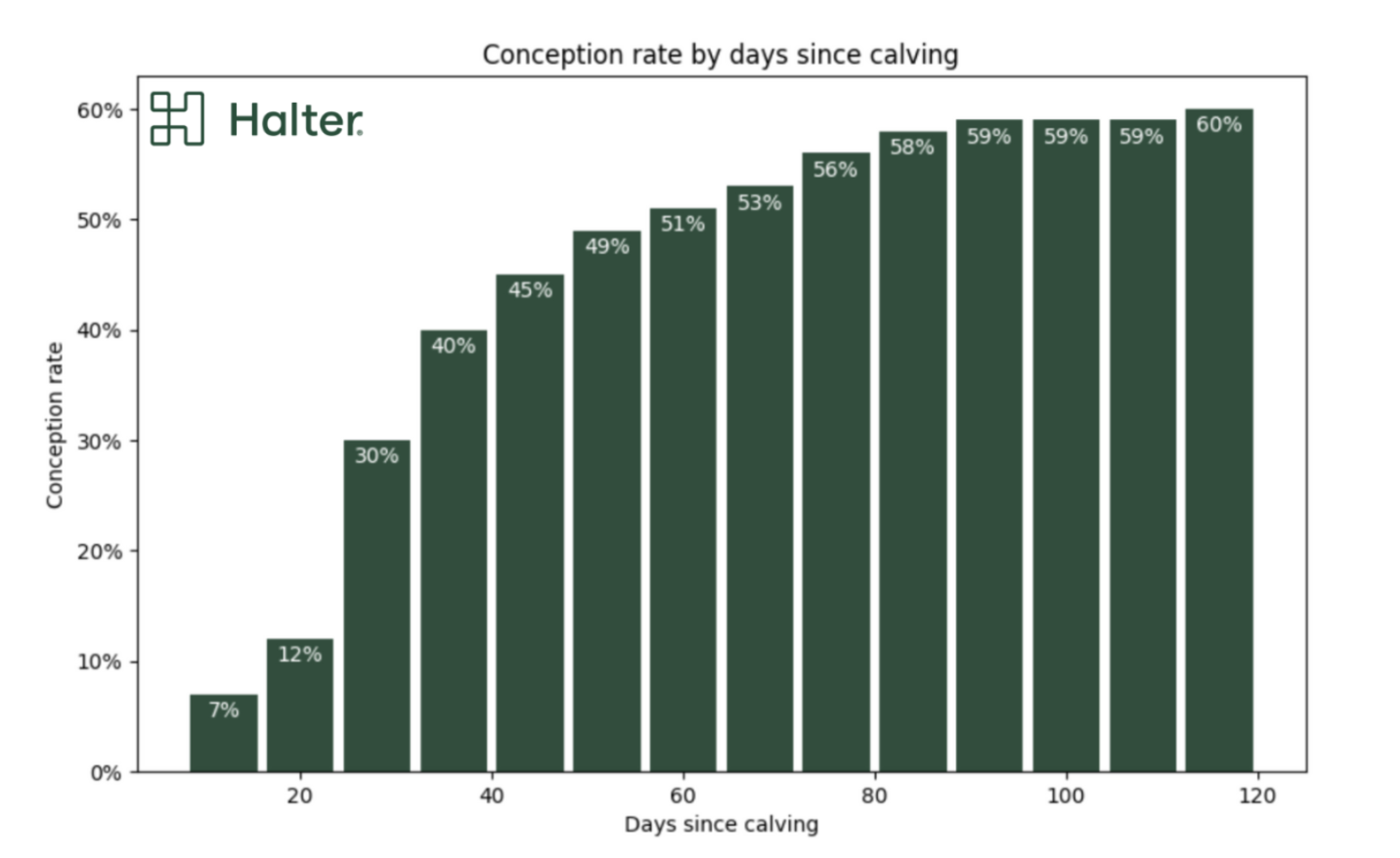
Age made a difference too. Three and four year olds were first to hit an average CP of 60% at around 80 days post-calving. Younger and older cows took a bit longer, but all age groups eventually reached the same point.
Another interesting finding: heats confirmed by Halter alerts showed the highest CP. Manually entered heats without confirmation were less reliable, suggesting that trusting the timing given by Halter’s tech, rather than guesswork or estimates (think: the eye-o-meter), helps boost results.
Spring 2024 in numbers
To round things out, here’s how the season looked across the fleet:
- Cycling rate at PSM: Median 75.5% (top 10% above 90%)
- 3-week submission rate: Median 86.3% (top 10% above 94%)
- Non-return rate: Median 54%
- 6WICR: Median 71.8% (top quartile above 76.7%)
- Not-in-calf rate: Median 16.2%
So, what now?
Mating is complex, and there’s no silver bullet. But the patterns are clear: timing, recovery, body condition, and early cycling all play a big part in setting farms up for success.
We’re not suggesting you completely overhaul your mating strategy overnight - keep doing what’s working for you! These insights aren’t a one-size-fits-all approach, and instead are simply a snapshot of what we’ve seen across hundreds of herds and thousands of cows.
Every farm is different, and understanding the bigger picture can help you think about where the biggest opportunities might be in your own operation.
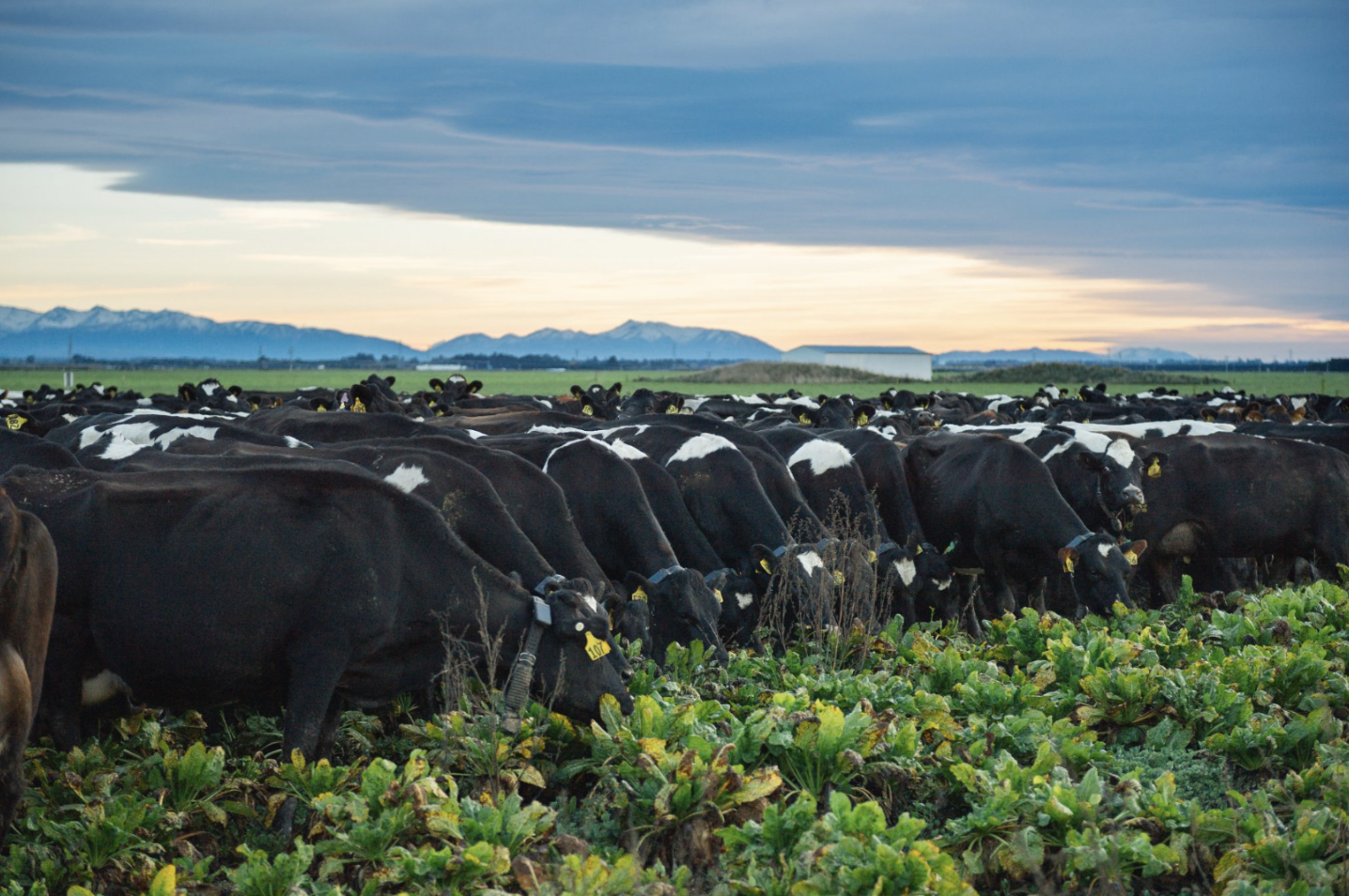
Related Blog Posts
See all articles.webp)
“It’s like an employee that never takes a day off” - Gary’s first year with Halter
In this post, we explore how Halter has transformed Gary’s farm, making daily operations smoother, more efficient, and less stressful.
Read more
Level up your pasture management
In this article, we take a look at the ways in which Halter can help you level-up your pasture management during late-winter and spring.
Read more
The Halter Collar
We answer some of our most frequently asked questions around our unique solar-power technology, the durability of our smart cow collars, and more in this article.
Read more




